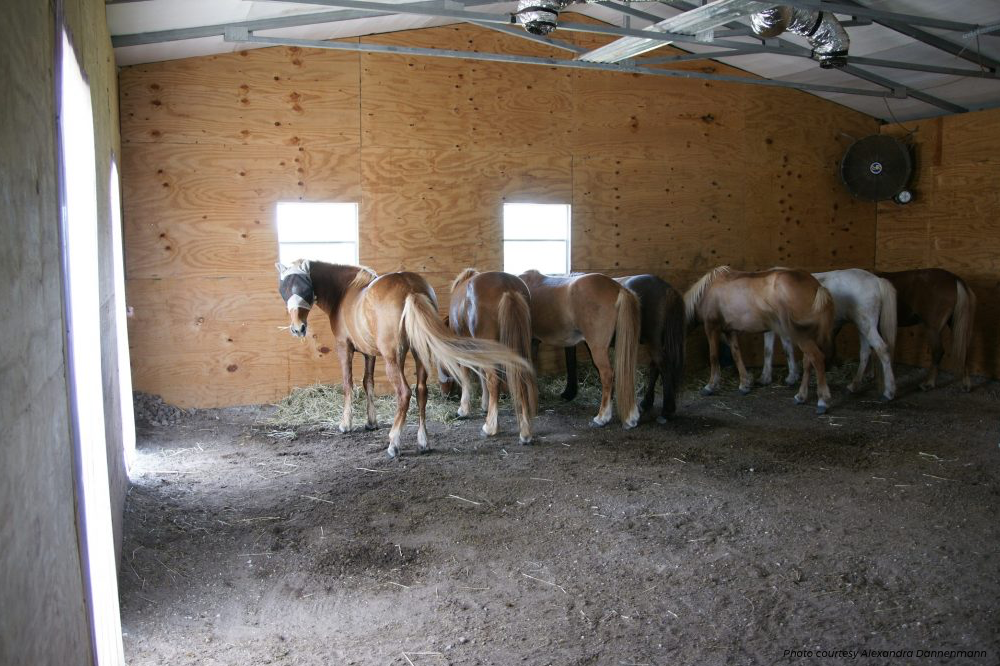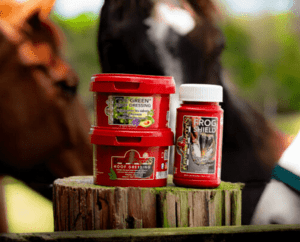Icelandic Horses In… Florida?

Alexandra Dannenmann fell in love with the Icelandic Horse when she was six years old. She was living in her native Germany then, and her parents bought her a horse. Stjarna was her name and she was a sturdy, fuzzy, Icelandic.
“I was fascinated by their personality, their power and reliability. Their five gaits seemed interesting to me and I realized that there is a bit extra in these strong, little horses,” said Alex, who is now an “IPZV Trainer B” and International Federation of Icelandic Horse Association Sport Judge. In 2017, she was named the “Trainer of the Year” by the FEIF.
Alex showed and trained Icelandic horses on her family’s farm in Germany for years, where the breed is much more common. But when she turned 19, a vacation to the United States got her thinking about relocating.
Seven years later she moved to Florida, of all places, and began importing Icelandic horses. Her horses live in an air-conditioned barn not that far from the beach.
From Vikings To The Tölt
Florida’s hot and humid climate couldn’t be any more different than what the horses are used to and bred for in their native, cold and blustery Iceland. The Icelandic horse is one of the oldest purebred horse breeds in the world. Vikings brought their horses with them on dragon boats from Scandinavia and Great Britain to Iceland more than a thousand years ago.
“It had to be a very tough and hardy horse to prevail in the cold and stormy weather on Iceland, this small volcano island close to the polar circle, where hardly anything grows,” Alex explained.
Among Icelanders, the breed is still considered an important partner and friend which helped make the island habitable. The compact and strong conformation of the breed, its good nature, and its unique and comfortable gaits have helped it grow and continue to be popular.

“They are generally clear-minded, ‘honest’ horses with an exceptional willingness to please,” Alex described. “They’re very friendly, and as predictable as a horse can be. But also very versatile.”
The breed is know for its unique gaits called “Tölt” and “Flying Pace.” Not all Icelandic horses compete in all five gaits at competitions. They are considered either a “four-gaiter” or a “five-gaiter” according to their genetic disposition. The tölt is a smooth trot-like movement where the horse always has at least one hoof on the ground, therefore it is “without suspension” and allows the rider to sit easily in the saddle.
“The speed range is big and some horses cannot only perform slow speed, but also reach up to the speed of gallop, which makes it a very fun and adventurous experience,” Alex said. “It feels a little bit like flying.”
Other gaited horse breeds, including the American Saddlebred or Tennessee Walking Horse can technically tölt as well. It’s just the terminology that’s different, and the beat and speed.
Florida Icehorsefarm
Alex’s farm is located in Southwest Florida along the Gulf Coast of the state near Fort Myers. The 13 horses on her property do require special care because of the hot weather, and she designed the farm to fit their needs.
“Icelandic horses are unbelievably adjustable to new circumstances and climates. However, it is also a breed that is known for their mental strength and durability and won’t show easily when they suffer. This applies especially for imported horses from Iceland,” she said.
Alex said diet plays a huge role in helping the horses acclimate to the tropical climate. She feeds additional minerals and salts that may be missing in Florida pasture.
“We provide the horses an air-conditioned barn including fans, where they can hide from the heat and the mosquitoes in the summer if necessary,” Alex explained.
The horses do have open access to outside pasture, too.

In order to compete, Alex travels across the country to meet with the small, but growing population of American-based Icelandic enthusiasts. She also spends a lot of time in Iceland, where she competes and judges competitions.
“Living and working on a continent like this, where the Icelandic horse breed is still in an early stage and help is needed almost everywhere, means spending a lot of time in airplanes,” she said. “The wintertime is usually being used to start young horses and prepare competition horses and riders for the upcoming season. While I’m mainly in Europe during the summertime, where I am needed for teaching clinics and judging international sport competitions in Scandinavia and other European countries.”


